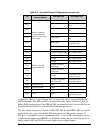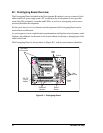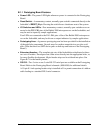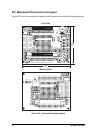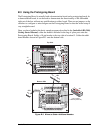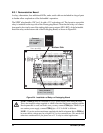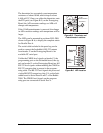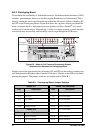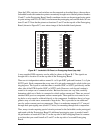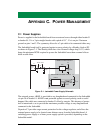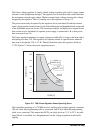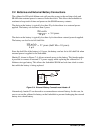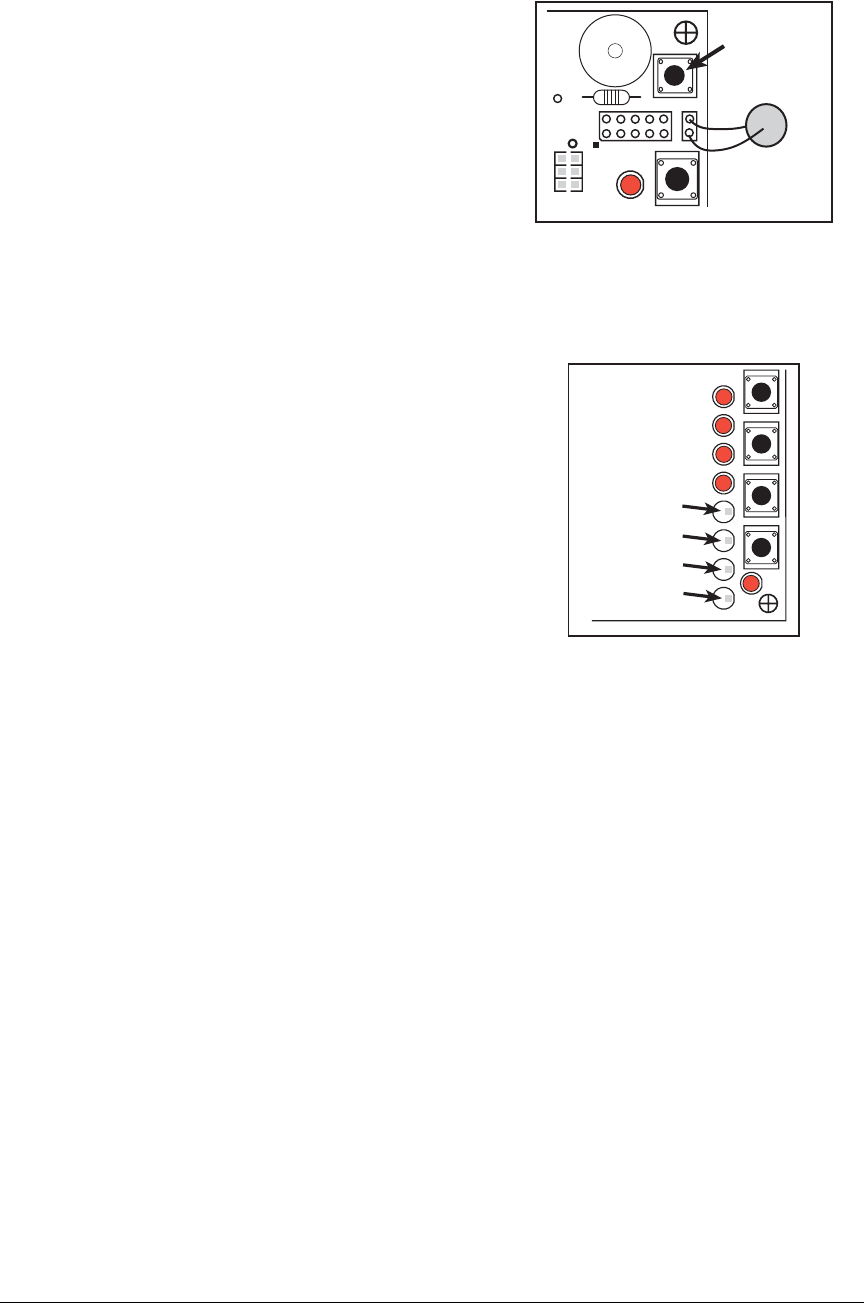
User’s Manual 75
The thermistor has a nominal room-temperature
resistance of about 10 kΩ, which drops to about
6kΩ at 40°C. Once you solder the thermistor onto
the RT1 pads (see Figure B-5) on the Prototyping
Board, the A/D converter readings on AD0 will
change with temperature.
If the 10 kΩ potentiometer is removed, the change
in A/D converter readings with temperature will be
larger.
The LEDs can be mounted in positions DS5–DS8,
shown in Figure B-6, to display the complete status
for Parallel Port A.
The serial cable included in the parts bag can be
used to connect the Jackrabbit’s RS-232 outputs
from header J1 on the Prototyping Board to an
available PC serial port.
Unlike the CMOS-level signals on header J3, the
programming port on the Jackrabbit board, the sig-
nals on header J1 on the Prototyping Board are full
RS-232 level signals without needing the CMOS to
RS-232 converter that is present in the program-
ming cable. The RS-232 level signals are processed
via the MAX232 transceiver chip, U4, on the Jack-
rabbit board to Serial Ports B and C of the Rabbit
2000. The CMOS-level signals on the program-
ming port are connected to Serial Port A.
Figure B-5. Thermistor and
Potentiometer Locations
Figure B-6. LED Location
Thermistor
10 kW
Potentiometer
Buzzer
JP2
1
2
3
R3
R1
LS1
S1
DS1
RT1
BZR
VCC
K
AD0
PE4
POT
HV0
+RAW
COIL(-)
PD0
GND
AD0
+
}
Existing
LEDs
}
Add
Dev Kit
LEDs
S2 S1
DS1DS2DS3
S4 S3
DS9
DS4
DS5DS6DS7DS8
PWR



